Simanaitis Says
On cars, old, new and future; science & technology; vintage airplanes, computer flight simulation of them; Sherlockiana; our English language; travel; and other stuff
THE TALE OF GENEVIEVE
YOU KNOW IT’S GOING TO BE a charming movie with this opening credit: “For their patient co-operation the makers of this film express their thanks to the officers and members of the Veteran Car Club of Great Britain,” followed directly by “Any resemblance between the deportment of our characters and any club members is emphatically denied ——— by the club.”
The movie is Genevieve and tells the adventure of a 1904 Darracq of this name as enthusiasts take her on the London-to-Brighton Veteran Car Run. Here are tidbits about this 1953 movie gleaned from a Brooks sale of Collectors Motor Cars and Automobilia held at Olympia, London, on December 2, 1993, together with my usual Internet sleuthing..
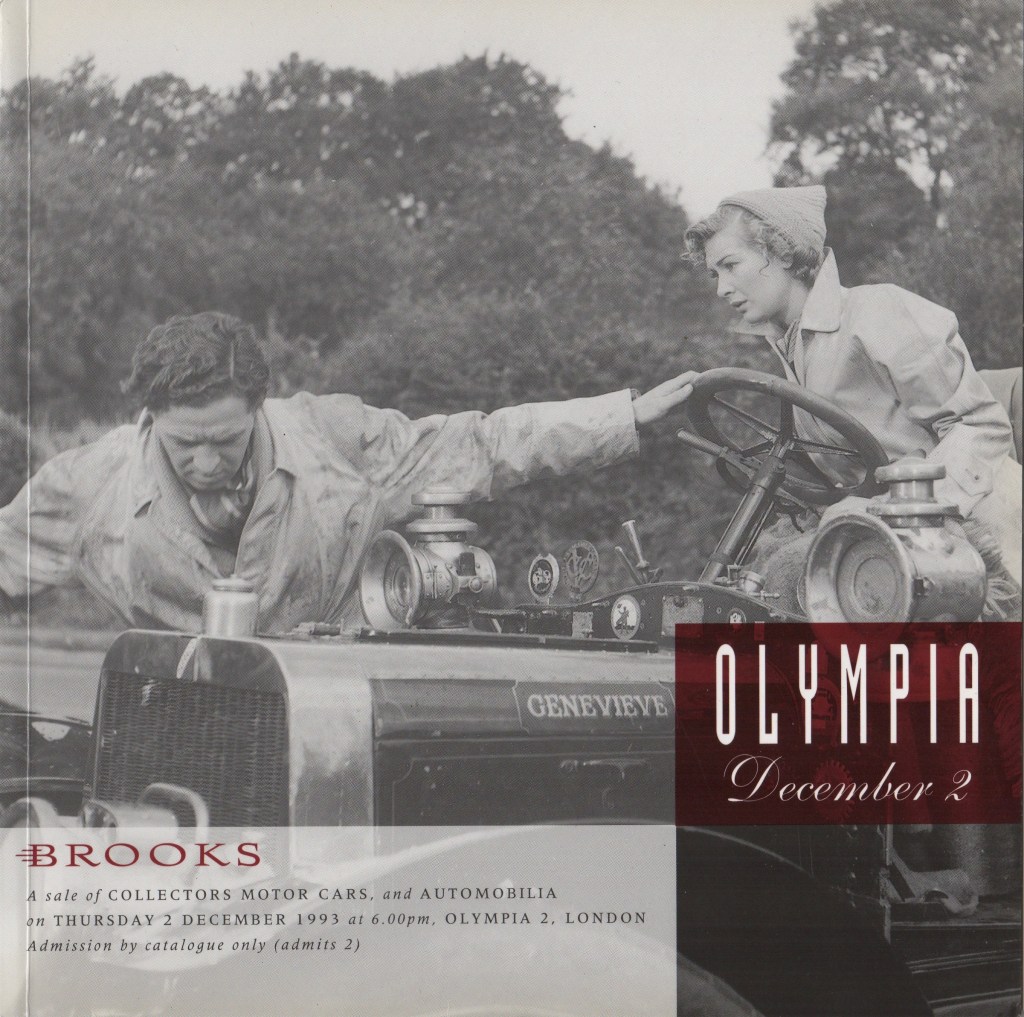
“Exactly forty years ago,” Brooks wrote in December 1993, “Rank film producer Henry Cornelius made a comedy about that quintessentially English institution, the annual London-Brighton Veteran Car Run and named the film after its four-wheeled star, an elderly Darracq named ‘Genevieve.’ ”
Background. Tidbits abound from this single sentence. Wikipedia notes, “The London to Brighton Car Run is the world’s longest-running motoring event…. The first edition, ‘The Emancipation Run’ in 1896, celebrated the recently passed Locomotives on Highways Act 1896, which liberalised motor vehicle laws in the United Kingdom.”
In particular, the Locomotives on Highways Act 1896 eliminated the requirement of a three-member crew including one walking ahead with a red warning flag.
The 1896 Emancipation Run started with 33 vehicles, 17 of which made the 54 miles to Brighton.
Bicycle Maker to Automaker. Frenchman Alexandre Darracq formed A Darracq et Cie in 1897, partly with the profits of his Gladiator bicycle works. The new firm’s 1898 three-wheeled voiturette was less than successful; its first four-wheel car, designed along Renault lines, was produced in 1900.
In 1902, Alexandre sold the business to a privately held English company named A Darracq and Company Limited, in which he took a substantial share and directorship. Though built in Paris (and named after that city’s patron saint), the 1904 Genevieve in a sense carried dual passports.
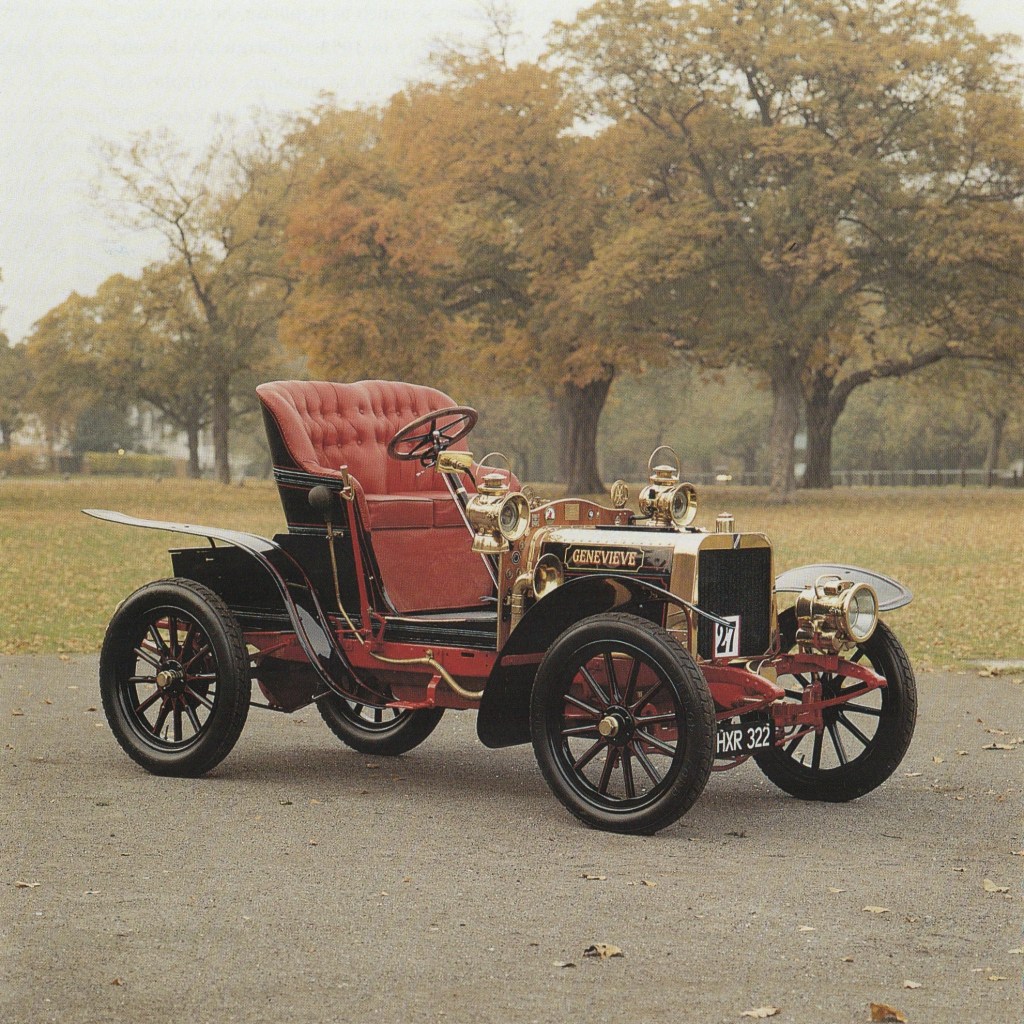
Genevieve’s Participation. Brooks wrote, “It was, in fact, a fortuitous accident that led Mr Cornelius to cast this little 1904 Darracq for the starring role in the film, since he had originally intended to feature a British-built Lanchester—but could not find a single owner willing to cooperate.”
Brooks wrote, “With her two-seat bodywork, flared front wings and twinkling brasswork, ‘Genevieve’ came to epitomise the typical veteran car to the general public, and her image appeared on every conceivable type of souvenir.”
A Proper Veteran Motorcar. Genevieve is powered by a Darracq Type “O” twin-cylinder engine rated at 12 hp. An enthusiast bought her in parts shortly after World War II. Norman Reeves took over the restoration and agreed to her participation in the film. Eventually tiring of being known as “Mr. Genevieve,” he lent the car to New Zealand enthusiast George Gilltrap who included her in his Rotorua car museum. Gilltrap then bought the car and, as Brooks noted, when “faced with an excessive demand for import duty for ‘Genevieve’ in 1958, he simply shifted his museum—lock, stock, and 1904 Darracq—to Coolangatta, Queensland, Australia.”
In 1989, Genevieve moved to Paul Terry’s Esplanade Extravaganza in Albany, Western Australia. Then, following the Brooks 1993 Olympia sale, she moved to the Louwman Museum in The Hague, Netherlands where she now resides.
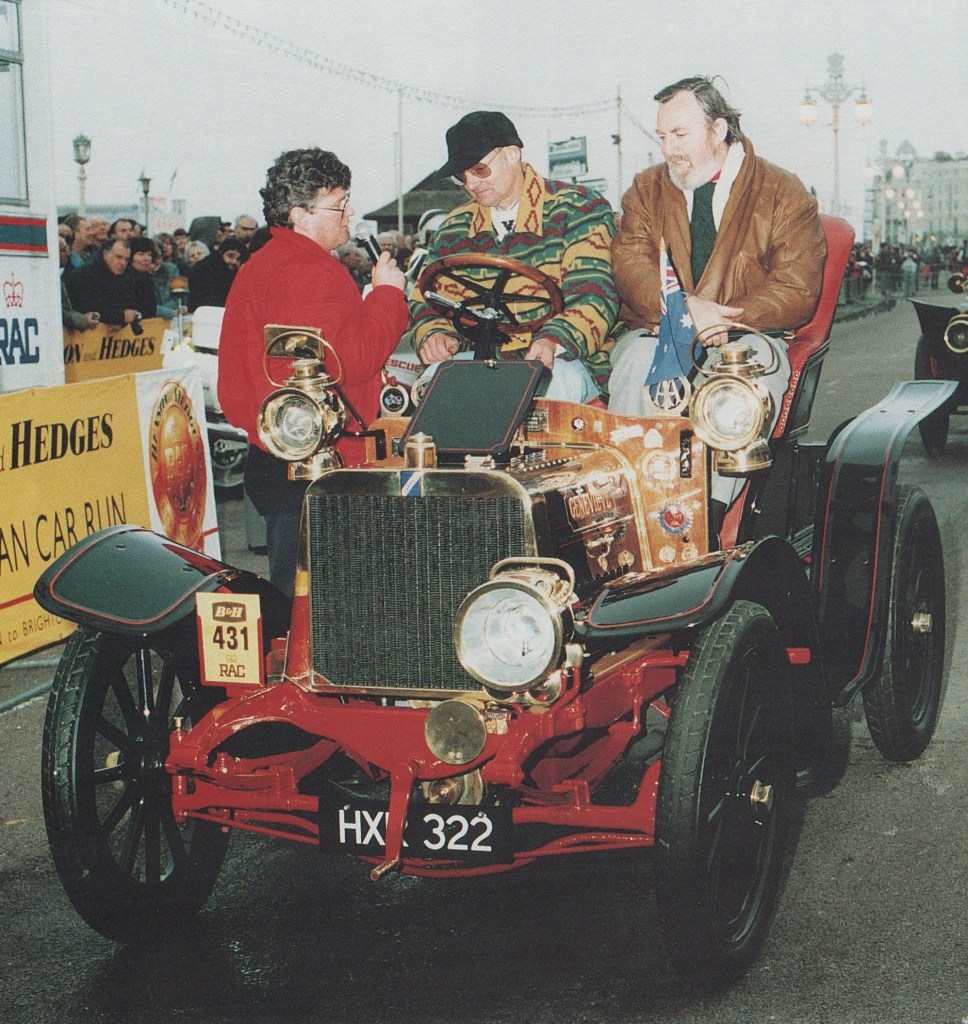
The Film. The film Genevieve is a charming 1953 comedy. Enthusiast Alan and wife Wendy McKim compete in Darracq Genevieve. Their friend Ambrose Claverhouse, his latest girlfriend, fashion model Rosalind Peters, and her St. Bernard compete in a 1905 Spyker.
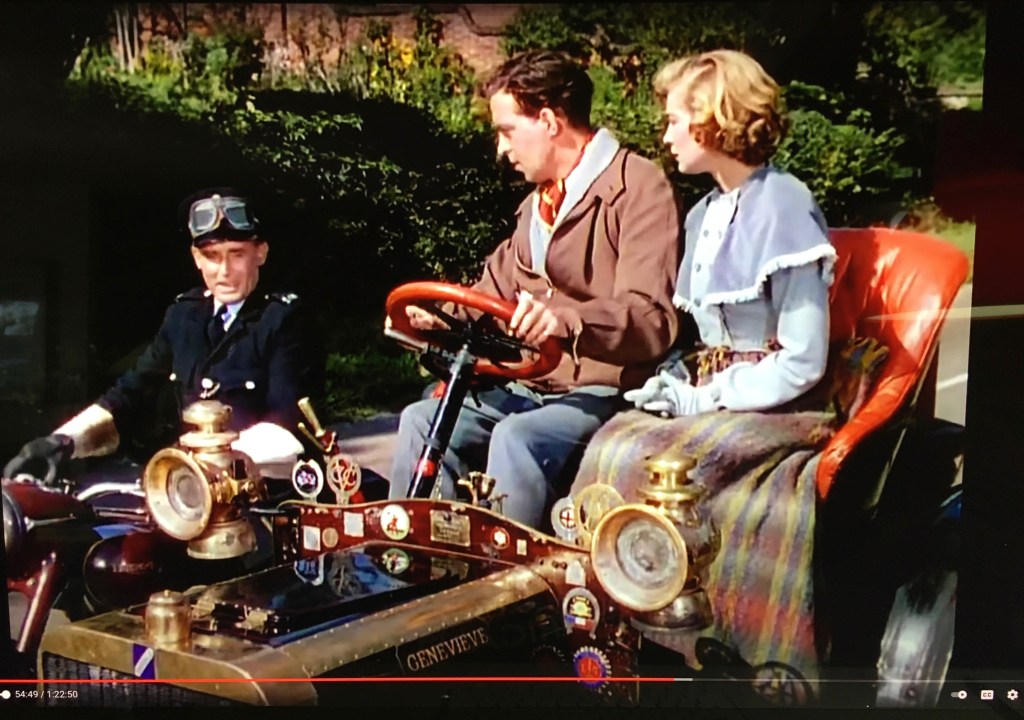
The adventure involves mechanical problems, a dingy run-down hotel, a drunken Rosalind playing a surprisingly good jazz trumpet, a £100 bet on who can return to London faster, and subsequent skullduggery on either participant’s part.
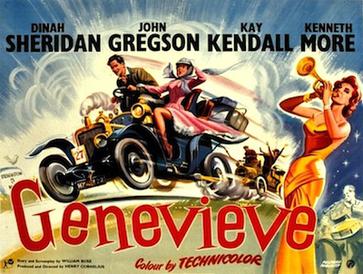
“A 1904 Darracq! Upon my word, sir, if you’ll forgive my speaking to you without an introduction. She’s beautiful. But she’s like new… it was in a Darracq exactly like this one that I asked my wife to marry me… In nineteen-o-four. And she said yes. Ah, but it was the car, I’m sure of that.”—James Dillon White, Genevieve. ds
© Dennis Simanaitis, SimanaitisSays.com, 2022

Going through the names of the stars in Genevieve I only recognized one of them, Kenneth More.
I spent six years as a child in England living in various homes, and one of the houses was directly across the street from his mother. Never actually met her.
Kay Kendall rings the faintest of bells. She was married to Rex Harrison and won an Oscar for “Les Girls” 1957.